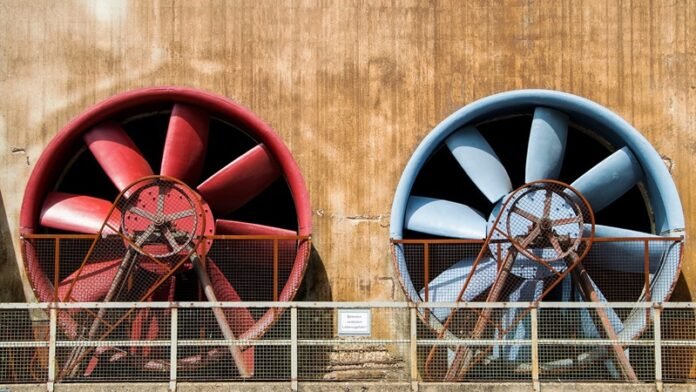Introduction: Have you ever stopped amidst your industrial operations to consider the efficiency of your workhorse – the mighty industrial fan? Does it hum along as it did when its blades first started spinning, its brightness still vivid against the rugged warehouse background? Or has the sheen worn off, the performance dampened with years of relentless rotation? Nestled within the veins of the complex industrial ecosystem, these fans ensure smooth operations, breathe life into mechanical hearts and undoubtedly deserve our vigilance in terms of maintenance, upkeep, and timely replacement. Today we set our sights on understanding what it truly means to maintain an industrial fan, prolong its lifespan, and augment its efficiency; an insight into its world, if you will.
Life And Times Of An Industrial Fans
Let’s first take a quick detour and focus on the subtleties of an industrial fan’s lifecycle. From its installation to its ultimate retirement, industrial fans traverse through stages of newness, optimum performance, gradual wear and tear, and finally, necessary replacement. Realizing that a fan slowly but gradually loses its efficiency over time is the first step in effective maintenance. Understanding this lifecycle also helps in predictive maintenance, which is far more cost-effective than reactive repair.
Recognizing the Telltale Signs
So how does one evaluate the health of an industrial fans? Listen to it. These fans have their own way of communicating. Unusual noises, shaking movements, decreased performance, and signs of physical wear are all the fan’s SOS. Learning to decode these can spare you from unplanned downtime, catastrophic failures, and budget overruns caused by unscheduled maintenance or premature replacements.
The Maintenance Plan Unveiled
Having gauged the necessity and signals for fan maintenance, let’s delve into the process. Start with regular cleaning – dust and grime are fans’ arch-enemies. Schedule periodical inspections to check for wear and tear, and replace defective parts promptly. Maintain a systemic lubrication schedule for moving parts. Lastly, balance your fan blades regularly. Imbalanced blades are not just inefficient but are also a safety hazard.
The Controversial Question: Repair vs Replace
Finding the thin line between repairing an aged fan and replacing it with a new one is challenging. While repairs may seem cost-effective in the short run, ailing fans often consume more power and work less efficiently. Determine your break-even point and choose wisely! The longevity of fans also depends on upgrades. Today’s technology allows us to improve fans’ efficiency and longevity by installing variable speed drives, low-energy motors, and fan controllers.
Safety First: Maintenance Dos and Don’ts
While maintenance is crucial, it’s important to respect the rules of safety. Always turn off and unplug the fan before servicing. Wear relevant safety gear and employ qualified personnel for repair and replacement tasks. Yet at the same time, don’t let safety obstruct necessary modifications. Bold innovation, driven by safety and efficiency, is the key to transformative maintenance.
The Future of Fan Maintenance: Technological Interventions
The rise of predictive maintenance through condition monitoring systems, AI-driven anomaly detection, and IoT-based remote monitoring systems promises a future where fan maintenance is not a mere routine but is an intelligent, preemptive, and responsive process – reflecting modern technology’s ability to redefine the norms.
Conclusion:
Industrial fans, often sidelined as mere components in the vast industrial machinery, play pivotal roles. Their upkeep and maintenance should align with their significance. And while their maintenance may seem a mundane task, it’s far from it. It’s a calculated, meticulous routine that demands a keen eye for wear and tear, regular cleaning, predictive auditing, strategic replacements, technological upgrades, and a careful balance between repair and replacement. Done right, it promises an optimum fan lifespan and ensures unhampered industrial operations – a well-oiled marriage of performance and durability.








